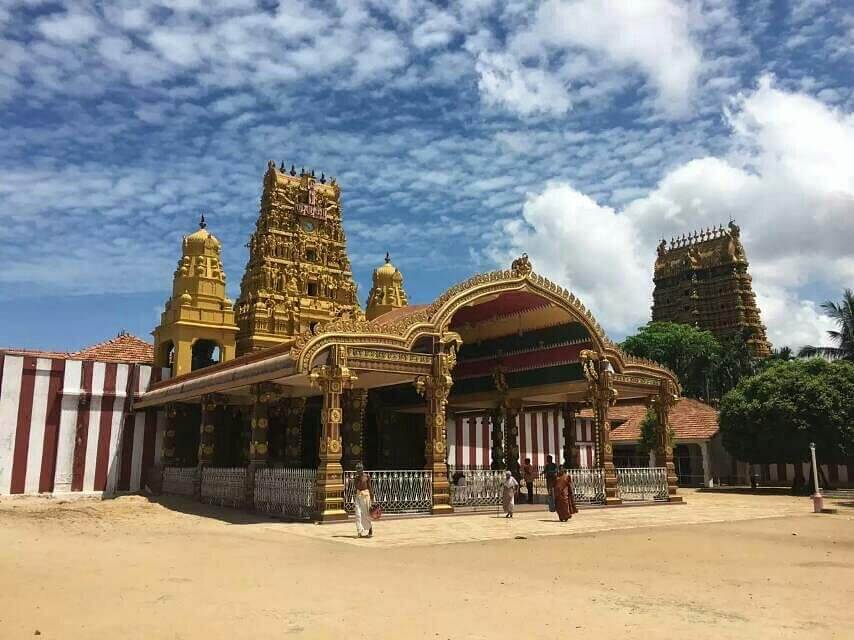Nainathivu
Sri Lanka, a land of ancient tales and spiritual wonders, is dotted with sacred sites that hold a deep connection…
View Details
The Nallur Kandaswamy Kovil is a venerable place of worship, rooted in centuries of history and tradition. It’s dedicated to Lord Murugan, the Hindu God of War and Victory, also known as Skanda, Kartikeya, or Kandaswamy. The temple’s history dates back to the 10th century, making it one of the oldest and most revered religious sites in Jaffna.
The original temple structure was said to have been constructed by the Chola Dynasty, an ancient South Indian dynasty that held sway over the Jaffna Kingdom. Over the years, the temple underwent various renovations and enhancements, but its spiritual importance remained unwavering.
The Nallur Kandaswamy Kovil is a masterpiece of Dravidian architecture, known for its intricate carvings, towering gopurams (entrance towers), and vibrant frescoes. The temple’s towering white gopurams are adorned with a riot of colors, depicting stories from Hindu mythology and the epic tales of Lord Murugan.
As you step inside the temple, you’ll be greeted by a sacred pool and a series of mandapams (pillared halls) that host various rituals and ceremonies. The inner sanctum, where the presiding deity, Lord Murugan, resides, is a sanctified space for devotees to offer their prayers and seek blessings.
The Nallur Kandaswamy Kovil holds deep spiritual significance for the Hindu community in Sri Lanka and beyond. It is a place of pilgrimage, devotion, and cultural preservation. The temple comes alive during the annual Nallur Festival, a grand celebration that lasts for 25 days, attracting thousands of devotees.
During the festival, the temple’s surroundings are adorned with colorful flags, and the air is filled with the sounds of music, dance, and religious chanting. The highlight of the festival is the chariot procession, where the idol of Lord Murugan is paraded through the streets of Nallur on a lavishly decorated chariot, accompanied by throngs of devotees.
Before you visit the Nallur Kandaswamy Kovil, consider these practical details:
The Nallur Kandaswamy Kovil is not just a place of worship; it’s a living testament to history, a marvel of architecture, and a place where the heart is touched by the deep spirituality of Jaffna. Whether you’re drawn to its historical and cultural significance, the architectural wonders it houses, or the vibrant energy of the Nallur Festival, the Nallur Kandaswamy Kovil promises a spiritual and cultural journey into the heart of Jaffna.
It’s a place where the gopurams reach for the heavens, where the frescoes tell stories of gods and legends, and where the heart is touched by the profound spirituality that envelops the sacred space. The Nallur Kandaswamy Kovil is a destination that offers a deep connection with tradition, culture, and the timeless devotion of a community that continues to honor its heritage.